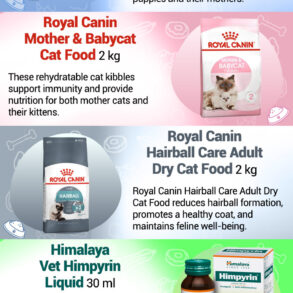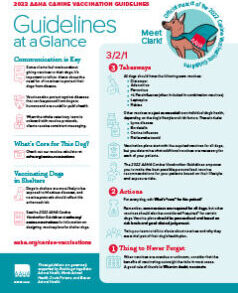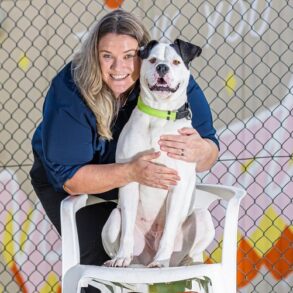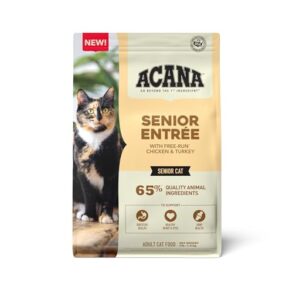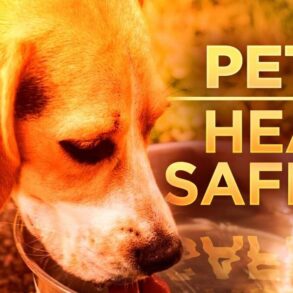
In the dynamic landscape of animal health, the need for protective measures against parasites is always present. In fact, according to the Centers for Disease Control and Prevention (CDC), tickborne disease cases have increased by 25 percent from 2011 to 2019, and from 2019 to 2022, state and local health departments reported more than 45,000 cases of tickborne disease to the CDC.1,2
The good news is today, pet owners and veterinarians have various options to protect their pets against fleas and ticks with pesticide products that are readily available online, in-store, or with a prescription from a veterinarian. With dangerous parasite diseases on the rise and so many product options to choose from, veterinarians, veterinary technicians, and other animal health experts may experience an influx of questions. It is more critical than ever veterinarians spend time speaking with caregivers, conduct individual assessments, and help pet owners consider their lifestyle and pet health history to determine which parasite protection fits them best.
As veterinarians, it is also important for us to be refreshed on how to handle customer product questions or complaints, off-label use, or even adverse events (AEs).
Pesticides in animal health products
According to the World Health Organization (WHO), pesticides are chemical compounds used to kill pests, including insects, rodents, fungi, and unwanted plants, such as weeds.3 While pesticides are used in many ways in public health, with more than 1,000 used worldwide,3 they play a pivotal role in animal health products–particularly in flea and tick products.
Pesticidal active ingredients, such as imidacloprid, fipronil, permethrin, and flumethrin, can be found in most over-the-counter flea and tick treatments and preventatives. Imidacloprid and fipronil have been used in products for years to control flea infestations, while flumethrin and permethrin effectively kill and repel ticks.
Parasite preventatives, including pesticides, undergo rigorous safety and efficacy testing and must demonstrate a meaningful impact on parasite burden to merit a label claim. Understanding the benefits and potential risks associated with their use is crucial for ensuring the health and well-being of our patients.

The benefits of pesticides
Effective parasite control
Pesticides are often pets’ first line of defense against harmful parasites. They can effectively treat and prevent infestations by fleas, ticks, and other pests, protecting pets from discomfort and potential diseases these parasites may carry, including zoonotic diseases with the potential to infect animals and people.
Preventative care and improved quality of life
While it may seem parasite activity spikes during the spring and summer, parasites such as fleas and ticks can cause health issues for dogs and cats year-round. Certain areas of the U.S. face higher disease and infection risks than others and at different times throughout the year. These pests impact pets’ health by stealing nutrients and transmitting organisms that spread parasites and diseases, such as tapeworm and Lyme disease.
Regular use of pesticide-based products can prevent year-round infestations and reduce the risk of vector-borne illnesses. By controlling pests, these products contribute to the overall quality of life of pets, ensuring they remain comfortable, healthy, and active.
While pesticides provide significant benefits, it is important to remember some pets may experience side effects, such as skin irritation or gastrointestinal upset, following exposure. These products must be used responsibly to mitigate potential risks, and it is essential to monitor pets for any changes after administration.
Adverse event reporting or product complaints
In tandem with this demand for preventatives, veterinarians may experience increasing product questions, product complaints, or even potential adverse events reported to their practice. Understanding where to report these potential adverse events or product complaints and what subsequently happens with the reported information is crucial.
Ensuring the well-being of pets is a collective responsibility, and veterinarians are at the heart of this mission.
Adverse event reporting is critical in product safety, improving treatment protocols, and informing future research. It cannot be understated how important it is to provide veterinarians with the confidence and knowledge to report adverse events for all products, whether pesticides, drugs, or vaccines.
The American Veterinary Medical Association (AVMA) describes an adverse event as an undesirable animal health occurrence during or after using a product or device.4 It is important to note an occurrence may or may not be caused by the product or device. Similarly, it should be noted correlation in the timing of product administration does not always equal causality when it comes to a potential adverse event.
According to the International Cooperation on Harmonisation of Technical Requirements for Registration of Veterinary Medicinal Products (VICH), an adverse event could be any observation in animals, whether considered to be product-related or not, that is unfavorable and unintended–occurring after any exposure to, or use of a marketed product.5 In the animal health industry, this could range from minor side effects to more serious health concerns following the use of a medication or treatment. Adverse events can include off-label and on-label uses of a product, events related to a suspected lack of expected efficacy, noxious reactions in humans after product exposure, or events related to the environment or residues in food.
It is strongly recommended veterinarians report all adverse events they encounter. The AVMA states, “Adverse events are rare, and the majority of them are minor, but some can be life-threatening.”6
Regardless of how minor an adverse event may seem, treat the animal’s medical needs before reporting an adverse event. Once the animal’s medical needs are met, the attending veterinarian or knowledgeable clinic staff should report the adverse event according to the product label instructions. Manufacturers are required to report adverse events to the oversight agency. Not all adverse events are reported to the same government agency; therefore, the best place to find details on how to report an adverse event is the product label or packaging. Regardless of the government agency involved, the manufacturer should be notified of the adverse event.




Why adverse event reporting matters
The commitment of veterinarians to adverse event reporting is crucial to increasing knowledge within the animal health and scientific community. As the AVMA reminds us, veterinarians reporting adverse events provide regulatory authorities and manufacturers with reliable and critical information to monitor and evaluate the safety and efficacy of products and devices used in the field.6 The quality of the information the veterinarian provides is extremely important in creating an accurate adverse event report. High-quality, accurate reports from veterinarians, who are trained medical professionals, provide the foundational data that can be used to monitor product safety.
Individual adverse event information becomes part of a larger data set, which can be analyzed and reviewed to monitor trends and safety signals over a product’s life cycle. When an adverse event is reported, it allows government agencies and manufacturers to investigate and determine if the involved product’s label or use should be changed. These insights are invaluable, as they contribute to the veterinary community’s shared knowledge and help us continually improve industry standards and practices–benefiting veterinarians, clients, and patients.
The process starts and relies upon veterinarians reporting adverse events. Without this information, neither manufacturers nor government agencies have the appropriate information to make informed decisions.
Ultimately, it is the collective responsibility of veterinarians, pet owners, government agencies, and manufacturers to work hand-in-hand when it comes to adverse event reporting. Through the joint effort of all parties involved, adverse events can be accurately reported with high-quality information and make a difference in trend data to potentially trigger a positive change.
Reporting adverse events: A linear processTo understand the importance of reporting adverse events, let’s review the steps involved in a report. These steps outline a linear process from start to finish, outlining what happens when a veterinarian reports an adverse event. 1) A veterinarian observes a suspected adverse event, and/or a pet owner reports a suspected adverse event to a veterinarian. 2) The veterinarian reports the adverse event according to the product label. a) The label clearly lists contact information for the manufacturer or animal health company. A veterinarian must record a few minimum information requirements for an adverse event to be considered a reportable event. These include:
b) In addition, reporting information regarding the patient’s concomitant medical conditions or products administered and any diagnostic testing results is recommended as it allows the animal health company/manufacturer to evaluate the report more entirely and determine the causes of the potential adverse event. 3) The animal health company/manufacturer records the adverse event and reports to regulatory authorities as legislation requires. 4) The animal health company/manufacturer evaluates data for trends and potential safety signals. |
As a veterinarian, consider it your responsibility to report adverse events in your practice and clinic. Doing so will contribute significantly to a safer and healthier future for animals. David Gosche, DVM, currently serves as senior director of U.S. Pet Health Veterinary Technical Marketing at Elanco. After receiving his doctor of veterinary medicine from the University of Florida, he practiced companion animal medicine for several years in Scottsdale, Ariz. Returning to Florida, Dr. Gosche served as national chair of a veterinary technology program until joining Bayer Animal Health as senior veterinary science liaison for the southeastern U.S. After a short stint in Elanco’s next generation development product incubator, he returned to the commercial business to lead a tremendous group of talented veterinarians in technical marketing. Gosche currently resides in Tampa, Fla.
References
- Swanson M, Pickrel A, Williamson J, Montgomery S. Trends in Reported Babesiosis Cases — United States, 2011–2019. MMWR Morb Mortal Wkly Rep 2023;72:273–277.
- Centers for Disease Control and Prevention. (n.d.). “Tickborne Disease Surveillance Data Summary.” Centers for Disease Control and Prevention.
- World Health Organization. (n.d.). Chemical safety and pesticides. Retrieved January 31, 2024, from https://www.who.int/news-room/questions-and-answers/item/chemical-safety-pesticides
- “Adverse Event Reporting.” 2024. American Veterinary Medical Association. Accessed 9/10/24.
- Veterinary Medicines Directorate. 2001. “Glossary.” GOV.UK. Accessed 9/10/24.
- “Reporting Adverse Events.” 2024. American Veterinary Medical Association, Accessed 9/10/24.
This post was originally published on this site be sure to check out more of their content.












